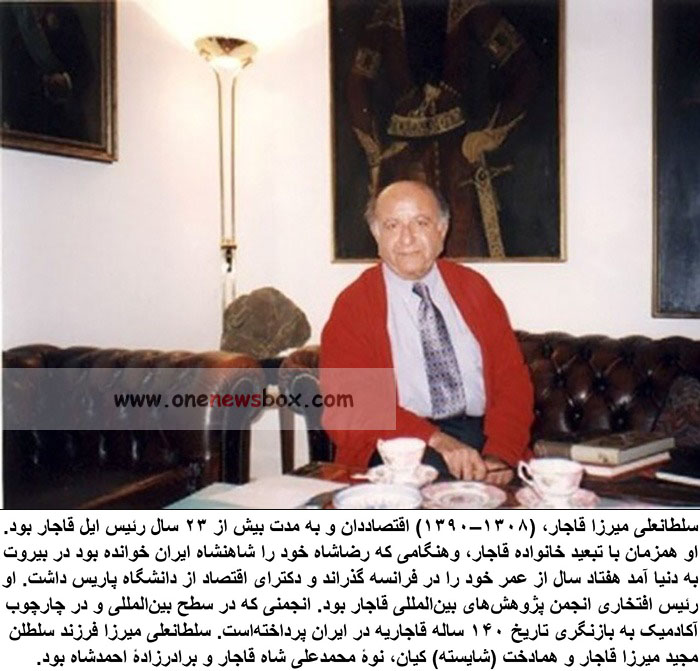Soltan Ali Mirza Qajar (15 Aban 1308 – 6 Khordad 1390 / November 16, 1929 – May 27, 2011) was not just a descendant of royalty, but also a distinguished economist and intellectual who led the Qajar clan for more than two decades in exile. His life encapsulates a story of displacement, identity, resilience, and cultural preservation. Born into exile following the fall of the Qajar dynasty, he spent the majority of his life abroad, but remained tethered to his ancestral past through his scholarly pursuits and leadership among the Qajar family. A man of dual heritage—both noble and academic—Soltan Ali Mirza’s life was one of deep introspection about the role of monarchy, history, and the shifting sands of Iranian identity.
Lineage and Birth in Exile
Soltan Ali Mirza Qajar was born on November 16, 1929 (15 Aban 1308) in Beirut, Lebanon, a symbolic city for exiles and revolutionaries throughout modern Middle Eastern history. His birth came during a tumultuous period for the Iranian monarchy. His family had been forced into exile after Reza Khan, the former military commander known as Sardar Sepah, deposed Ahmad Shah Qajar and declared himself Reza Shah Pahlavi in 1925, marking the end of the Qajar dynasty which had ruled Iran since 1789.
Soltan Ali Mirza was the son of Soltan Majid Mirza Qajar, a prince of the Qajar line, and Hamadokht (Shayesteh) Kian, a woman of distinguished lineage in her own right. Hamadokht was the granddaughter of Mohammad Ali Shah Qajar—the penultimate Qajar monarch—and a niece of Ahmad Shah, the last ruling shah of the dynasty. These deep familial ties positioned Soltan Ali Mirza within the very heart of Qajar royal bloodlines, a direct heir to a dynasty whose legacies continue to shape Iranian historiography.

